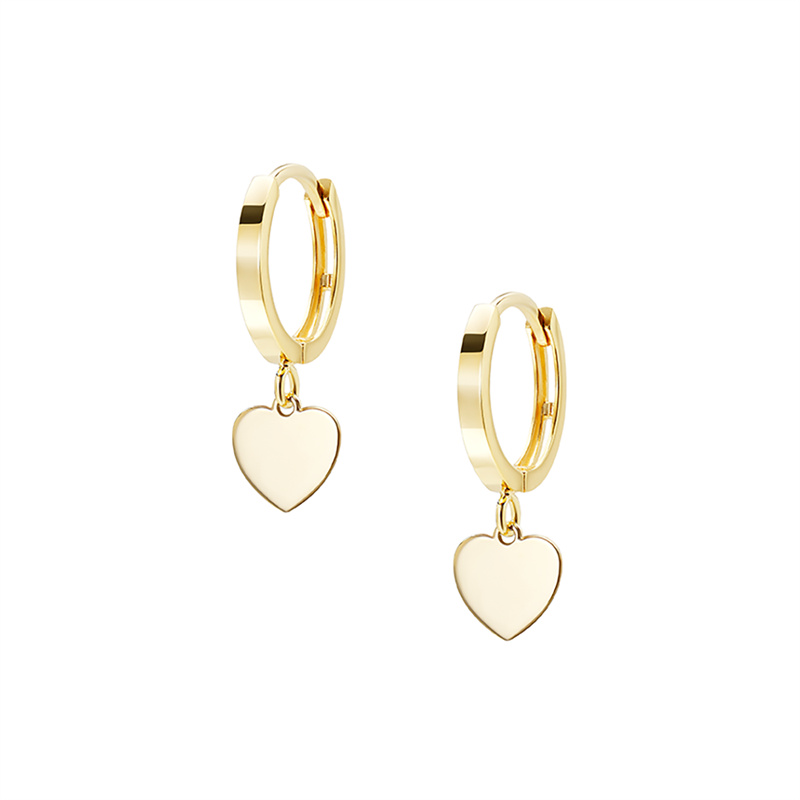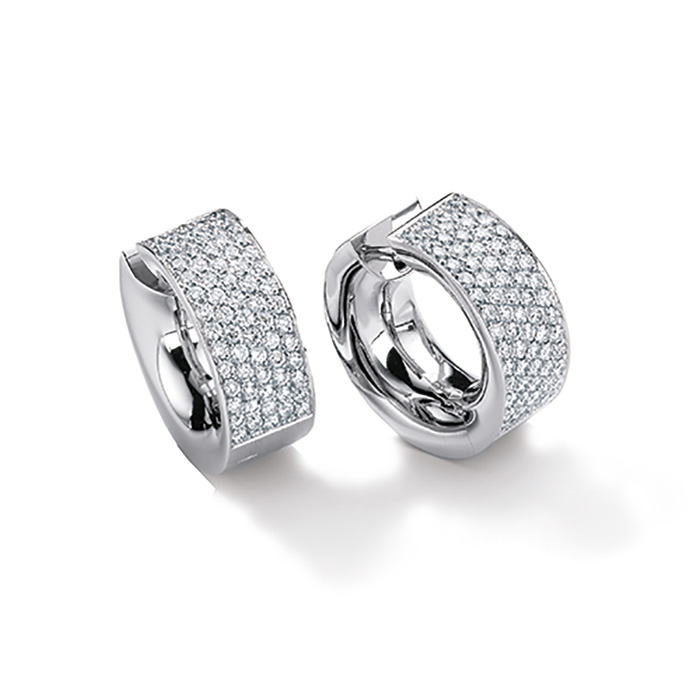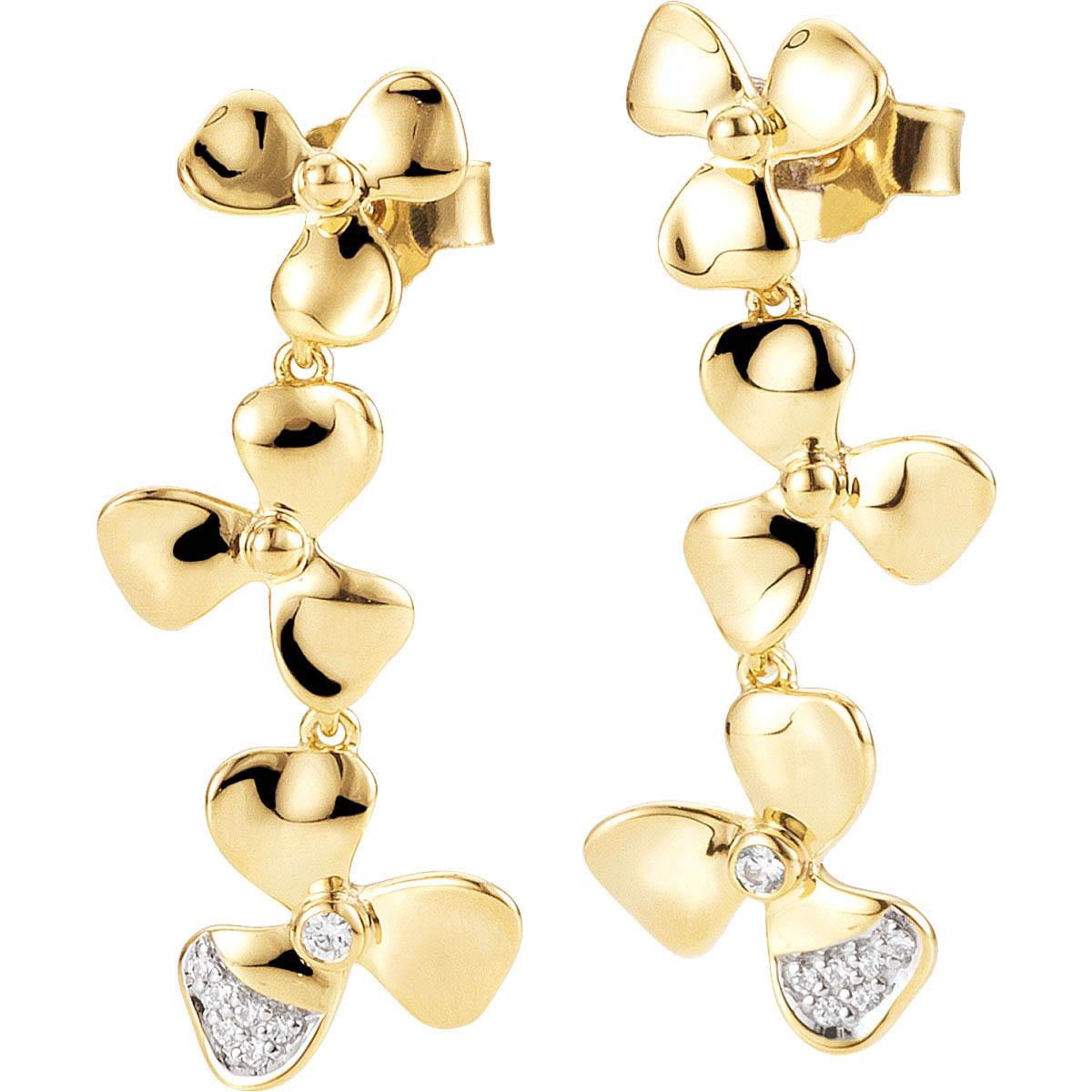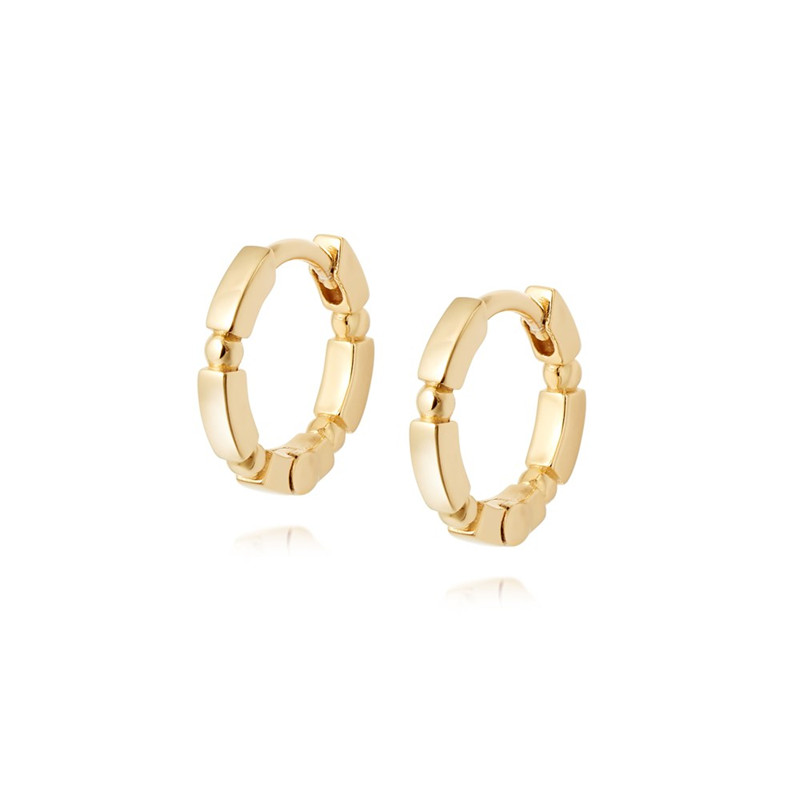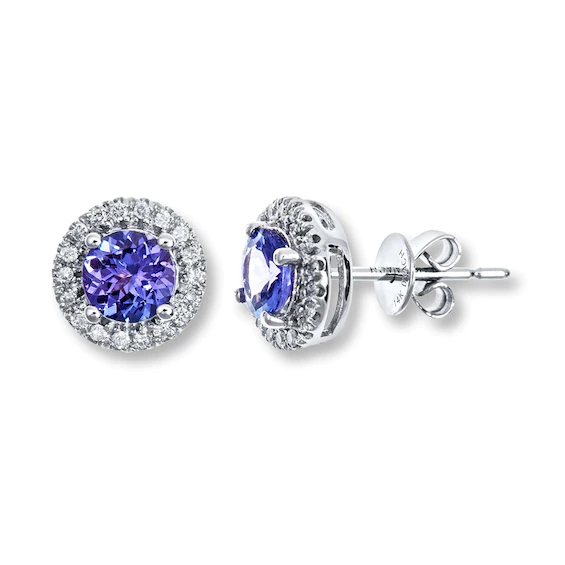The Cost of Making Custom Love Pendant Earrings
The Cost of Making Custom Love Pendant Earrings
LET’S GET STARTED : mo@kingjy.com
The Comprehensive Guide to the Cost of Making Custom Love Pendant Earrings
The desire to express love through jewelry is as old as time itself. While store-bought pieces have their charm, a custom-designed pair of love pendant earrings carries an immeasurable weight of personal significance. They are a physical manifestation of a unique story, an emotion, or a bond. However, embarking on the journey of creating such a personalized treasure brings a fundamental question to the forefront: What will it cost?
The answer is rarely a simple figure. The total cost of custom love pendant earrings is a tapestry woven from numerous threads: materials, labor, design complexity, and the craftspeople you choose to partner with. This guide will meticulously unravel each of these cost factors, providing you with a transparent and detailed framework to understand the investment required. Whether you are a individual commissioning a one-of-a-kind gift or an entrepreneur looking to launch a small jewelry line, this knowledge is power.
Part 1: The Foundational Cost Factors – An Overview
Before diving into specific line items, it’s crucial to understand the four pillars that support the entire cost structure of custom jewelry:
- Materials: The physical substance of your earrings—the metals and the gemstones. This is often the most variable and significant cost driver.
- Labor and Manufacturing: The expertise and time required to transform raw materials into a finished product. This includes design, model-making, casting, setting, and finishing.
- Design and Complexity: The intricacy of your chosen design. A simple, minimalist heart will cost exponentially less to produce than a detailed, ornate pendant filled with complex filigree and multiple gemstones.
- The Jewelry Partner: The choice between a local independent jeweler, a specialized custom jewelry studio, or an overseas OEM (Original Equipment Manufacturer) dramatically affects the price point and the experience.
Understanding the interplay between these pillars is key to budgeting effectively.
Part 2: Deep Dive into Material Costs
The choice of materials is the primary determinant of your final cost. This section breaks down the options for both metals and gemstones.
A. Metal Selection and Cost Implications
The metal forms the foundation of your earrings, its structure, and its overall aesthetic.
1. Sterling Silver (925 Silver)
- Description: An alloy made of 92.5% pure silver and 7.5% other metals (usually copper) for strength. It’s a bright, white metal that is highly versatile and affordable.
- Cost Factor: Low. Silver is the most budget-friendly precious metal option.
- Considerations: It can tarnish over time when exposed to air and moisture, requiring occasional polishing. It is also softer than platinum or gold, making it more prone to scratches. Ideal for less complex, everyday pieces or for those testing a design before committing to a more expensive metal.
- Price Estimate: The cost is based on weight and the current market price of silver. For a pair of small-to-medium pendant earrings, the raw silver cost might range from $20 to $80, but this is just the metal value; fabrication costs will be added on top.
2. Gold
Gold prices are primarily based on weight (grams or pennyweight), purity (karat), and the market price of gold per ounce.
- Gold Karats:
- 14K Gold: Contains 58.3% pure gold. The perfect balance between richness of color, durability, and affordability. It is the most popular choice for custom fine jewelry in markets like the U.S.
- 18K Gold: Contains 75% pure gold. Has a richer, deeper yellow color but is softer than 14K gold. More expensive due to higher gold content.
- 10K Gold: Contains 41.7% pure gold. The most durable and least expensive gold option, but it has a paler color and some people can have skin reactions to the higher alloy content.
- Gold Colors:
- Yellow Gold: The classic color.
- White Gold: Created by alloying yellow gold with white metals like palladium or nickel and almost always plated with a very hard, bright white metal called rhodium. The rhodium plating will wear off over time (usually 1-3 years), requiring replating to maintain its bright white appearance.
- Rose Gold: Created by alloying gold with a high proportion of copper, giving it a warm, pink hue. Very popular for love-themed jewelry as the color is considered romantic.
- Cost Factor: Medium to High. Gold is a significant investment. The cost for the metal alone for a pair of pendant earrings could easily range from $150 to $600+ depending on weight, karat, and the current soaring market price of gold.
3. Platinum
- Description: A dense, heavy, naturally white, and hypoallergenic metal that is extremely durable and resistant to wear. It is the most prestigious and luxurious metal choice.
- Cost Factor: Very High. Platinum is typically 40-50% more expensive than gold because of its density (heavier for the same size piece) and its rarity.
- Price Estimate: The raw metal cost for platinum earrings could start at $500 and rise rapidly based on the design’s weight.
B. Gemstone Selection and Cost Implications
Gemstones can be the centerpiece of your love pendants, and their cost varies astronomically.
1. Diamonds
The cost of diamonds is governed by the 4 Cs: Cut, Color, Clarity, and Carat Weight.
- Cut: The most important “C” for brilliance. A well-cut diamond will sparkle magnificently. Excellent cuts command a premium.
- Color: Graded from D (colorless) to Z (light yellow). Near-colorless (G-J) grades offer excellent value while appearing white to the naked eye.
- Clarity: Refers to the presence of internal (inclusions) and external (blemishes) flaws. VS (Very Slightly Included) or SI (Slightly Included) grades are eye-clean and offer good value.
- Carat Weight: The weight of the diamond. Price per carat increases significantly as the carat weight goes up.
- Cost Factor: High to Very High. Even small diamonds add cost. A single 0.25-carat good quality diamond could cost $200 – $500. For a pair of earrings, this cost is doubled.
2. Alternative Gemstones
A vast world of color exists beyond diamonds, often at a fraction of the cost.
- Mid-Range Stones: Sapphires (blue, pink, yellow), Rubies, and Emeralds. These are durable, classic precious stones. Cost can range from $50 to several hundred dollars per carat depending on quality, size, and origin.
- Affordable Options:
- Moissanite: A lab-created gemstone that rivals diamond in brilliance and hardness (9.25 on the Mohs scale) for a much lower price. A popular and ethical choice for a diamond-like look.
- Lab-Grown Diamonds/Sapphires/Rubies: Chemically, physically, and optically identical to their mined counterparts but created in a controlled environment. They are typically 30-50% less expensive than mined stones and are an excellent ethical choice.
- Other Gemstones: Aquamarine, Amethyst, Citrine, Garnet, Peridot, etc. These can be very affordable, often $10 – $100 per carat, allowing for larger, colorful statements without a huge budget.
3. Pearls
Pearls add a timeless, elegant touch to love-themed jewelry.
- Freshwater Pearls: Cultivated in lakes and rivers, they are abundant and affordable. They come in various shapes (round, baroque) and colors (white, pink, peach). A pair of good quality freshwater pearl drops might cost $20 – $100.
- Akoya Pearls: Saltwater pearls known for their brilliant luster and perfect roundness. More expensive than freshwater pearls.
- South Sea & Tahitian Pearls: The largest and most valuable pearls, commanding very high prices.
Part 3: Labor, Craftsmanship, and Manufacturing Costs
This is the “how much for the work” section. Labor costs are typically broken down into stages.
1. Design and CAD Modeling
- Process: Turning your idea into a manufacturable blueprint. A designer will create technical drawings or a 3D computer-aided design (CAD) model.
- Cost: This can be a flat fee ($100 – $500) or sometimes be waived if you proceed with production. Complex designs cost more. This fee is for the intellectual and technical labor of design.
2. Model Making
- Process: Creating a physical model of your earring. Today, this is most commonly done using a high-resolution 3D printer that creates a wax or resin model from the CAD file.
- Cost: Often bundled with the CAD fee or into the overall production cost. Could be $50 – $150 for the pair.
3. Casting
- Process: Using the 3D-printed model to create a mold for the “lost-wax casting” process, where molten metal is poured to create the raw components of your earrings.
- Cost: This is usually a per-gram charge for the metal plus a casting fee. The labor and overhead for this process might add $50 – $200 to the cost.
4. Stone Setting
- Process: The meticulous handwork of placing and securing each gemstone into the metal. The cost is per stone and varies by setting style.
- Basic Prong/Claw Setting: ~$25 – $50 per stone
- Bezel Setting: ~$35 – $60 per stone (requires more labor)
- Pave Setting (many small stones set close together): ~$75 – $150+ per stone due to extreme difficulty and time required.
- For a pair of earrings with two center stones, setting alone could cost $50 – $200.
5. Finishing and Polishing
- Process: Cleaning up the cast metal, removing any imperfections, soldering on findings (earring posts, hooks), and applying the final polish (high-shine, matte, textured) or plating (rhodium for white gold).
- Cost: Often a flat fee per piece. Polishing might be $20 – $50 per earring. Rhodium plating could be an additional $25 – $50 for the pair.
Part 4: The “Who” Factor – Choosing Your Jewelry Partner
Your choice of maker dramatically influences the cost structure and experience.
1. Local Independent Jeweler
- Pros: Highly personalized service, you can meet the artisan face-to-face, support local business.
- Cons: Highest labor costs due to localized overhead.
- Cost Implication: High. You are paying for their expertise, time, and brick-and-mortar expenses. Expect a significant markup on materials and a high hourly labor rate ($75-$150/hr).
2. Online Custom Jewelry Platforms (e.g., CustomMade, etsy artisans)
- Pros: Often more affordable than local jewelers, wide range of styles and artists, accessible from anywhere.
- Cons: Communication can be less immediate, you can’t see materials in person before buying.
- Cost Implication: Medium. These makers often have lower overhead and can be more competitive.
3. Overseas OEM (Original Equipment Manufacturer)
- Pros: Lowest possible cost per unit, especially for larger quantities (e.g., 50+ pairs). Advanced technology.
- Cons: Minimum Order Quantities (MOQs) are standard, communication can be challenging across time zones, quality control requires diligence, sampling is critical.
- Cost Implication: Low (for bulk). However, for a single pair, the setup costs (CAD/mold) make it less economical than a local jeweler. Ideal for small businesses, not individual gifts.
Part 5: Real-World Cost Scenarios
Let’s translate these factors into tangible estimated price ranges for a single, one-off pair of custom love pendant earrings (excluding any bulk discounts).
Scenario 1: The Minimalist & Modern
- Design: Two small, solid gold heart pendants on simple hooks.
- Materials: 14K Yellow Gold, no gemstones.
- Labor: Simple CAD, casting, finishing.
- Partner: Online jeweler.
- Estimated Total Cost: $300 – $600
Scenario 2: The Classic Romantic
- Design: Two pear-shaped pendants, each with a small diamond at the top, leading to a mini pearl drop.
- Materials: 14K White Gold (rhodium plated), 2 x 0.02ct diamonds, 2 x 5mm freshwater pearls.
- Labor: Moderate CAD, casting, diamond setting, pearl drilling and setting, finishing.
- Partner: Local jeweler.
- Estimated Total Cost: $800 – $1,500
Scenario 3: The Statement Maker
- Design: Two intricate, openwork heart pendants with milgrain edge detail, each featuring a central lab-grown sapphire surrounded by a halo of tiny lab-grown diamonds.
- Materials: 14K Rose Gold, 2 x 0.25ct lab sapphires, 20 x 0.01ct lab diamonds total.
- Labor: Complex CAD, casting, intricate pave setting for the diamond halos, detailed finishing.
- Partner: High-end custom studio.
- Estimated Total Cost: $2,000 – $4,500+
Conclusion: Understanding Value Beyond Price
The cost of custom love pendant earrings is a sum of its tangible parts: grams of metal, carats of gems, and hours of labor. However, its value is intangible. It’s the value of a perfect design that exists nowhere else. It’s the value of the story behind them—the proposal they commemorated, the anniversary they celebrated, the personal style they embody.
When budgeting for your custom piece, focus on your priorities. Allocate your funds to what matters most: the brilliance of a better diamond, the warmth of a higher karat gold, or the complexity of a unique design. Get detailed quotes from a few different makers, and ensure you understand what is included.
Ultimately, custom jewelry is an investment in creativity, emotion, and personal legacy. While the price tag is a number, the value of wearing—or giving—a piece of jewelry that was imagined and crafted just for you is, truly, priceless.
